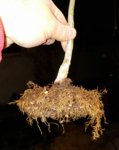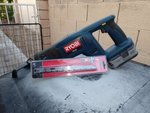I certainly agree with regard to foliage and abscission, but roots are a sink tissue. Maybe amylase manages to convert starches to sugars that can be moved, but I think it is minimal --> IOW carbohydrates are lost in either case. Clip the tip or desiccate it and ethylene causes branching. Meanwhile, at a cut surface, auxin piles up and new roots are initiated directly. I don't think this part happens quite so quickly with air pruning (not that it really matters).
Indeed it does not happen so quickly, and that's where the advantages lie. The plant has more time to naturally regenerate (and 'decide' which way to go is best) in dessication style pruning. With mechanical pruning, the plant is forced, no decision making, only responsive action. Roots might grow on places where they would certainly die later because they are forced to grow.
Air pruning is not as stressful for a plant as mechanical pruning, it does not make wounds and it doesn't influence the system as a whole with shocks of auxin depletion (sink towards the roots for restauration). It's not just carbohydrates in the roots that are lost, it's also the general redirection of nutrient streams towards the roots, streams that aren't being used higher up. Air pruned plants tend to have a steady slow release dosage; you don't see growth slow down when it's building feeders. Whereas with mechanical pruning, you do.
If a stable growth pattern is your aim, I'd go with air pruning.
But whatever your preferred technique is, pruning helps. For the best feeder roots, go with aeroponics. What I've seen there, damn. No other techniques even come close to what that yields in root mat mass and volume.
Excuse me now, I'll be going outside for a happy dance. Today we had the first actual rain in 2 whole months! For a country that's basically a drained swamp, that's an unusually dry summer.


 20180320_124031
20180320_124031 20180321_175048
20180321_175048 20170929_183246
20170929_183246 2017-10-15_03-19-34
2017-10-15_03-19-34


